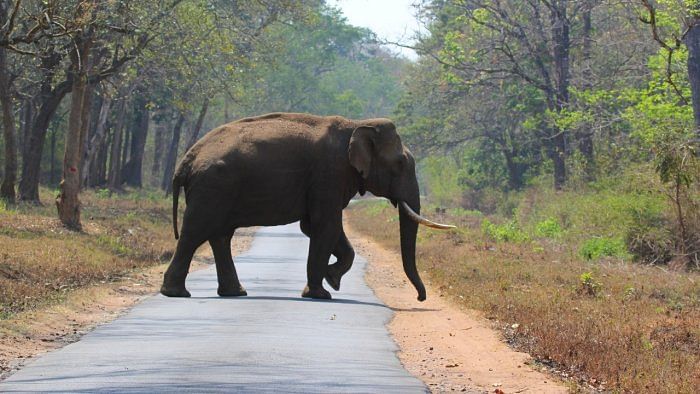
The residents of Santhanpara and Chinnakanal in Idukki district, Kerala, demanded the capture of Arikomban, aka rice tusker (for his habit of eating rice off ration shops), for interactions that had led to mortalities and property damage. The forest department’s decision to capture the elephant for captivity was opposed by a petition filed in the Kerala High Court by People for Animals. Over 13 panchayats protested against the petition, fearing relocation. The court’s ruling to translocate the elephant to Parambikulam was opposed in a review petition filed by a local MLA, citing the short distance from capture to the release site and fearing his return.
However, the tusker was translocated to Periyar Tiger Reserve. He has moved to Meghamalai, Tamil Nadu, where he is being monitored after incidents of fresh interactions in the area. Arikomban’s case is unique because of the number of people involved in deciding his fate.
Read | Relocated rogue elephant from Kerala forest enters human settlements in Tamil Nadu
The locals demanded Arikomban’s permanent capture, which is no solution to protecting wild elephants. Plus, there is a local population of elephants, and the possibility of colonisation remains. “For every elephant removed from Hassan, we have observed an average of 2-3 elephants taking its place,” explains Ananda Kumar, senior scientist at the Nature Conservation Foundation. Also, captured elephants are put in permanent captivity and undergo hard, distressing training in kraals for almost a year to become kumkis, which are used to capture or rescue wild elephants.
On the other hand, animal welfare organisations demanded translocation, a method which has failed in India and worldwide, but used as an immediate response. Take, for example, elephant Karuppan from Talavadi Hills, Tamil Nadu. The first attempt to capture him in January 2023 involved three kumkis, earthmovers, drones, and 100 personnel on the ground. But the tusker moved into the forest despite being darted three times. He was captured on April 17 and translocated to Thattakarai Forest. On May 4, he was held responsible for the death of a farmer in Perumugai village.
The capture of Arikomban involved 150 forest staff and four kumkis. On day four, he was found near Meghamalai. He had travelled 40 kilometres. A staggering 120-member unit tracks his movements to prevent interactions with humans in the area. A circular has been issued to locals to avoid night travel, and tourists are restricted.
This solution is not only extremely stressful to the elephants but also leads to more interactions in newer areas and is expensive and resource-intensive.
Similar cases await court hearings in Kerala. One of the elephants whose release is demanded, captured this year, is PT-7, for interactions that persisted for two years again in Palakkad and Idukki districts. PT-7 was found with 15 pellet wounds on his body when he was captured. Following the petitioner’s requests, how safe will PT-7 be if released back into the area?
While there is a critical urgency to assess the use of translocation as a solution to mitigate interactions, fighting for the protection of individual animals needs to be understood too. In cases like the tigers Ustad and Avni, there have been reports of how online campaigns and petitions might have led to further risk to the lives of locals due to a delay in action to capture the animal. In other cases, it has led to locals being involved in the retaliatory killing of wildlife.
There are over 50 Arikomban fan pages on Facebook. Some campaigns ask, “What is his crime? He just stole ‘some’ rice from shops built on land that was his once upon a time.” Soon, a movie on Arikomban will be made. Director Sajid Yahiya exclaims on social media, “A fight for the justice of a creature who was evicted! Arikomban’s story is the latest example of how a society, which can’t take kindly to the problems of its fellow creatures as cities and settlements grow, pushes them out.”
In cases such as these, involving a wild animal, locals, the forest department, animal welfare activists, politicians, the High Court, urban wildlife enthusiasts, and the media—who among these gets to tell the story? How do these actions impact conservation and coexistence? Are the burdens of conservation equally shared? What about the locals who have lost families, the only earning member’s livelihood, those forced to avoid societal commitments held after 6 pm fearing safety, and those unable to get marriage proposals fearing elephant interactions near grooms’ homes?
Various factors affect conservation attitudes, from social, cultural, and economic to political. For a successful conservation strategy, including all stakeholders in decision-making is necessary. Hence, locals’ attitudes towards conservation management are essential too, enabling better participation. Fighting for the protection of individual animals impacts this delicate connection.
It’s necessary to sidestep sensationalism and be accommodating to realities other than our own.
(The writer is an independent environment reporter)